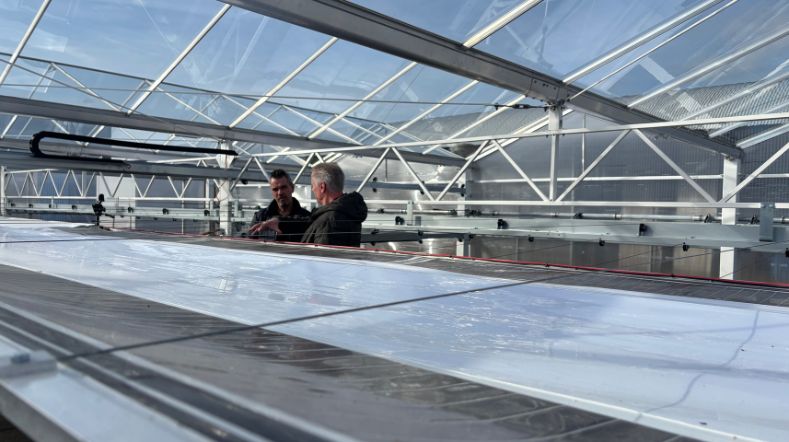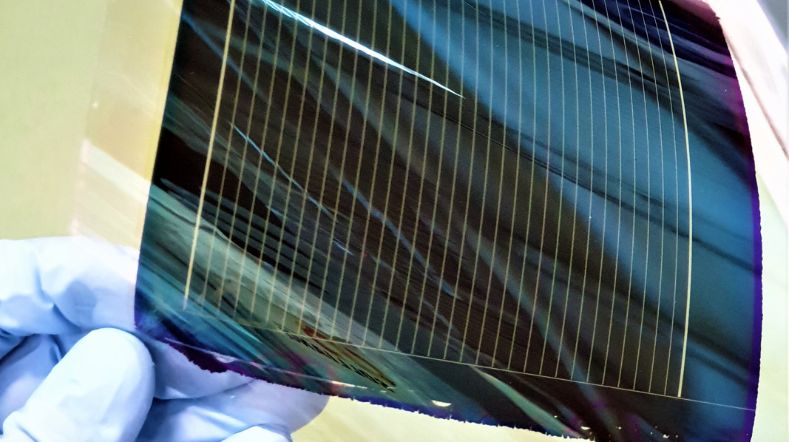
Tandem technology for higher PV performance
Combining different solar cells in a PV module enables a conversion efficiency above 40%. If one solar cell is optimised for short wavelength photons, and the other for long wavelength photons, the two solar cells together will extract more electrical energy. We’re researching and developing these tandem applications.
The importance of higher PV performance
Higher PV performance helps reduce the total costs of generating electricity. And it means that we need less surface area for solar power. Both elements contribute towards the transition to the large-scale use of renewable energy.
Webinar: The next generation of solar technologies
How to make solar energy smarter and greener? Join our webinar to delve into cutting-edge developments in photovoltaic (PV) technology, circular solar solutions, flexible modules, and tandem architecture.
How does tandem PV work?
A tandem solar panel consists of 2 solar cells on top of each other. In this case the top cell is made of perovskite. This cell converts part of the solar spectrum into electricity and transmits the infrared light to the bottom silicon solar cell. The silicon bottom cell is of the bifacial type, which means that it also converts the diffuse light that falls on the rear side of the panel to electricity.
There are 2 types of configuration. In the 4-terminal configuration, the 2 stacked solar cells deliver solar power separately. In the 2-terminal configuration, the 2 cells are electrically stacked, like the batteries in a torch. These are the two main configurations for tandem PV modules; they’re suitable for different applications and provide different manufacturing opportunities.
Higher PV performance of interest to the market
The international technology roadmap for photovoltaics (ITRPV) foresees that tandem PV with crystalline silicon (c-Si) will make rapid progress towards industrial implementation, and will have obtained a significant market share by 2025. The technology is very suitable for the Netherlands because of the limited available area for ground PV installation and the importance of rooftop PV.
Technologies using tandem PV
Hybrid organic-inorganic perovskite thin-film solar cells are a very suitable candidate technology for pairing with c-Si to construct the tandem. Within the Solliance collaborative partnership, we’re executing an industrial research programme on perovskite PV technology. Together with academic and industrial partners, we’re working on combining perovskite thin-film solar cells with c-Si solar cells.
So far, an efficiency gain of 5 percentage points over typical industrial c-Si cells has been achieved. In addition, a power density of over 3300W/m2 has been demonstrated with bifacial PV tandem cells. We began scaled-up tandem module field tests in 2018. We’re also conducting research into fully thin-film-based PV tandem technologies, such as perovskite combined with CIGS or a perovskite-perovskite tandem.
Our strength as a partner
Based on our know-how spanning the entire production chain from silicon wafers to the solar cell and PV system, we can provide support on topics such as:
- Adaptation of c-Si cell and module technology to suit tandem application. Examples are specific applications of polySi passivated contact cell technology that we have developed (also known as industrial TOPCon), and back contact cell and module technologies.
- Development of high-efficiency, thin-film perovskite solar cells to be applied as top solar cell in a tandem with a broad selection of transparent, thin layers for electrical conductivity.
- Scale-up of the manufacturing processes of perovskite solar cells and materials for industrial production within our research programme partnership, demonstration projects, and feasibility studies.
- Integration of thin-film solar cells, particularly the perovskite solar cell, into tandem panels. Examples are developing and applying materials suitable to protect the perovskite solar cells, and designing and configuring the electrical interconnection of the cells and the Bill of Materials (BoM).
- Integral tandem device design, including characterisation, modelling, and optimisation. For example, optical analysis and optimisation for achieving the highest possible yields.
- Accelerated degradation testing, including analysis of and solutions for extending the stability of these solar panels. Perovskite solar cells require interconnection and encapsulation methods different from current, standard solar panels. Creating stable long-lifetime tandem modules is an important objective of our research programme.
- Monitoring the performance of the tandem panels by collecting reliable data from field tests, to gain insight into the energy yield.
Our latest developments
Shade screens with rollable solar foil combines energy generation with climate control in greenhouses


Dutch consortium develops manufacturing technology for perovskite solar cells


Webinar: Solar energy in Brabant - Building a sustainable future for Europe


The next generation of solar technologies

Solar panel production back to Europe



